About this study
Over the course of a cumulative 2000+ days, the LINUS team immersed in the experiences of 10 different types of digital health technologies — from wearables, to at-home diagnostics, to applications. In our study, we developed three pillars fundamental to building a relationship with consumers who turn to digital technologies to optimize their health.
Inside the Digital Health Lab
Our team of strategists share first-hand insights from their experiences using different digital health technologies, and the critical factors for companies to consider to form a meaningful relationship with its users.
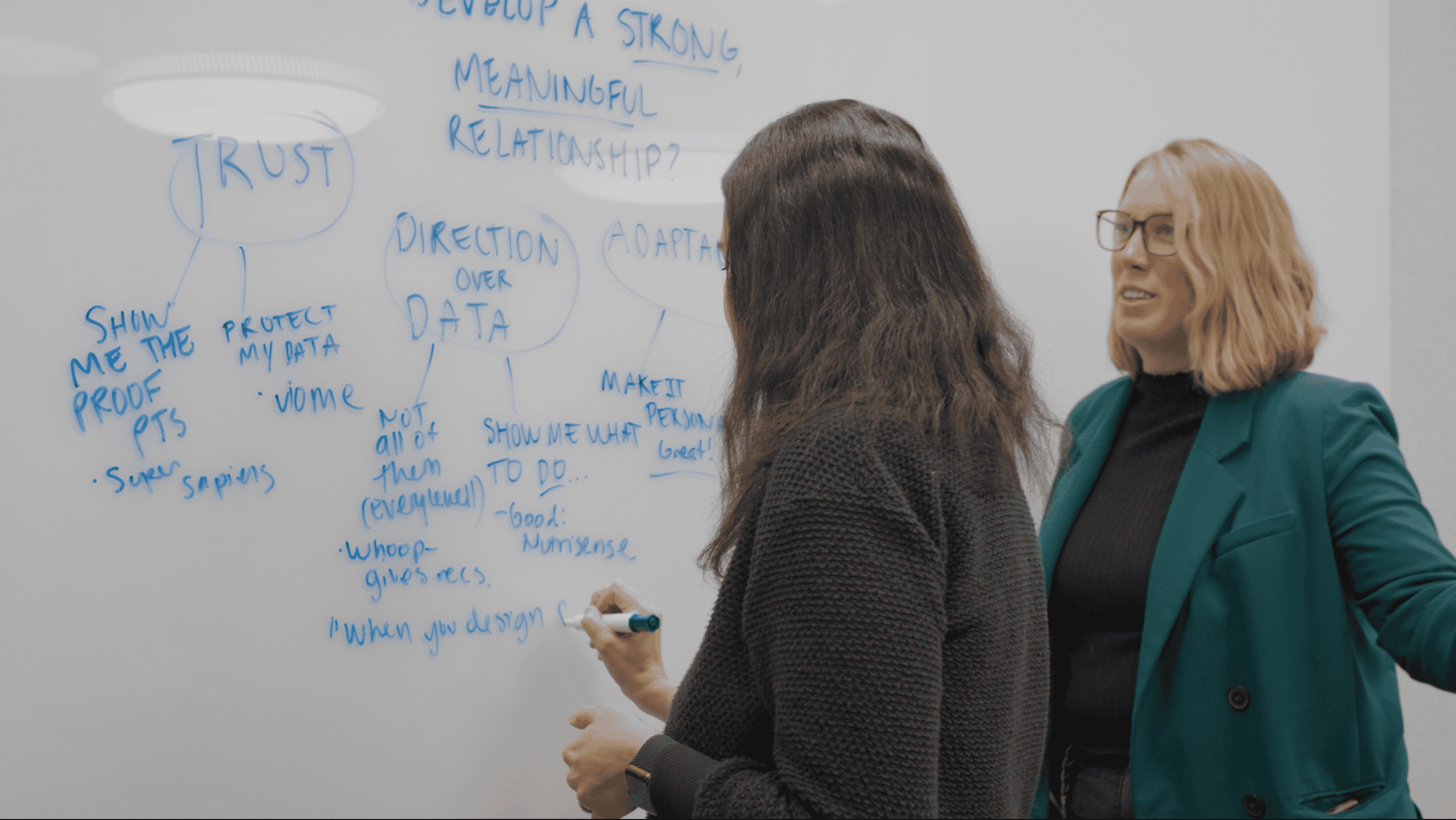
Key Takeaways
- Digital IS the foundation of health: In the next 5 years, digital health tech will evolve to become the backbone of our health ecosystem.
- Trust isn’t enough: To win today’s health consumer, the relationship needs to be symbiotic.
- Direction over data: Consumers crave more than just raw data, they expect digital health tech to synthesize, too.
- It takes two: Consumers are sharing personal data in exchange for insights. For that, they want to know where that data is coming from, how it’s being calculated, and why they should trust it.
- Adapt or die: Personalization can’t just be an empty promise. Consumers want a more curated experience adapted to their specific needs.
Our Lab
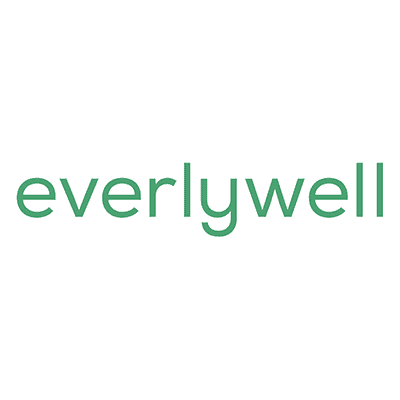

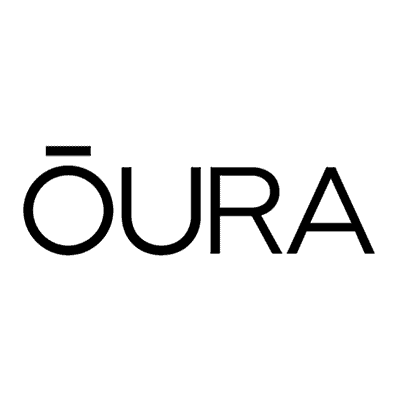
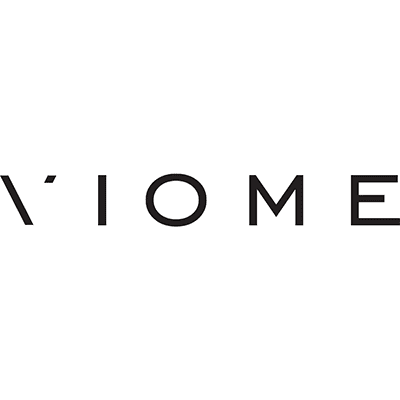

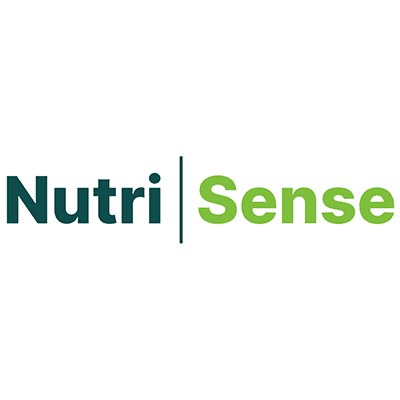
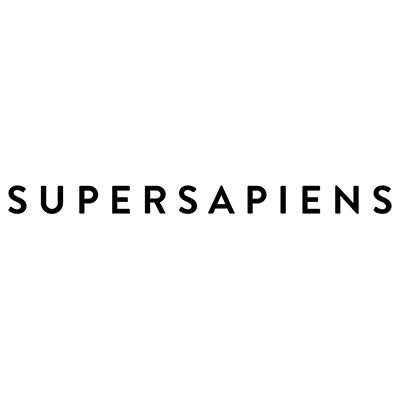
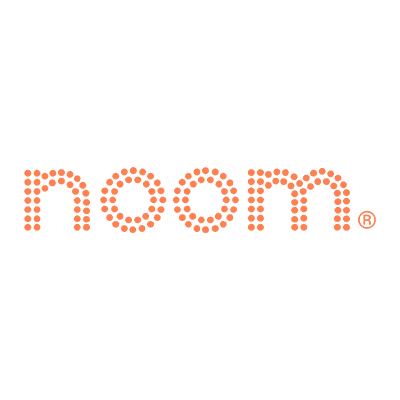

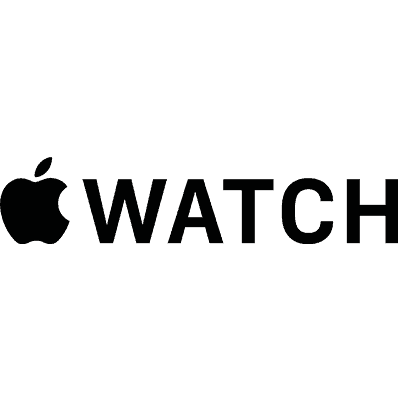
Meet the Health Optimizer
Driven by two forces — a pandemic and a growing market of health tech offerings — we identify that sophisticated consumer who is an extension of their own care team as a Health Optimizer. With increased access to personal health data, today’s health decisions may not always start at the doctor’s office. To understand why the Health Optimizer makes decisions on the tech they choose to monitor their health, we need to first understand why that person is trying to accomplish it. Often, they are motivated by the ability to track their metrics and feel empowered with personal knowledge that allows them to take health and healthcare into their own hands. Yet they’re frustrated by low visibility into their own health metrics, or not feeling validated when they go to a traditional doctor’s office.
As Health Optimizer’s literacy and use of data to make decisions about their health increases, they crave information that tells them something new. And for companies with digital health technology, they need to prove that there are inherent values that help build a relationship with the Health Optimizer. To establish a lasting relationship with the Health Optimizer, companies need to do three things:
- Provide direction over data
- Develop for adaptability
- Build a basis for trust
Key Jobs to be Done

Give me confidence to navigate a menu when out to eat

Tell me when it’s ok (and healthy) to take it easy

Make me better in rest and in motion

Validate my hunches about my gut health

Connect me to a community of fellow athletes

Educate me on how my diet affects my health

Optimize my overall endurance

Fit my lifestyle instead of making me adjust

Help me develop positive mental health habits

Monitor my sleep
Building a relationship with the Health Optimizer
To become the backbone of tomorrow’s health, digital health companies need to prove that they can empower the Health Optimizer to take health into their own hands — a need not always addressed in today’s health ecosystem. The Health Optimizer is looking for a relationship that goes beyond signing into an app, calibrating a wearable — they’re looking for something deeper. Digital health technology needs to make a conscientious effort to build a relationship that includes three critical pillars: trust, direction, and adaptability.
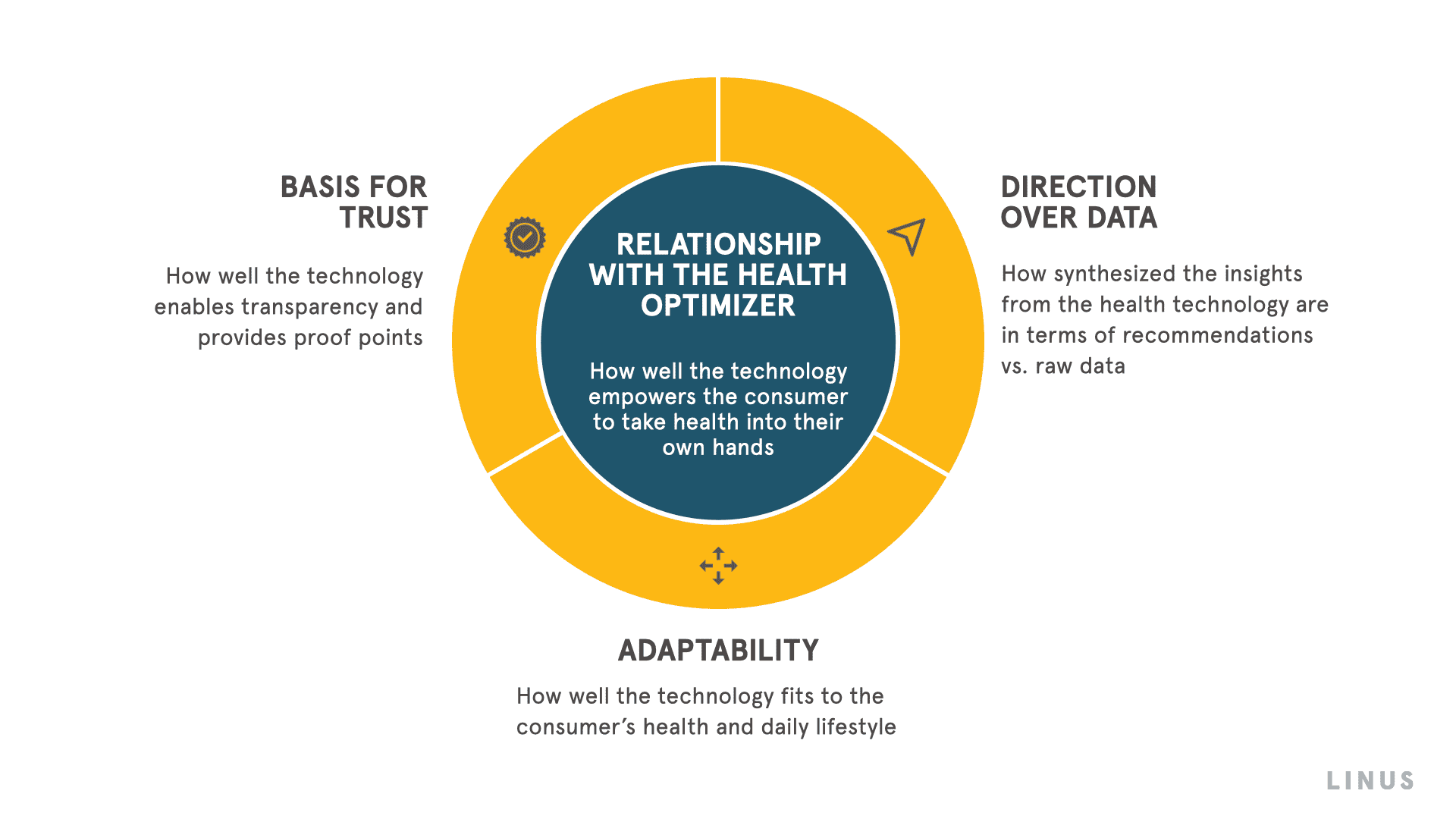
Direction over data
How synthesized the insights from the health technology are in terms of recommendations vs. raw data
At our disposal, is a data dump of information that could transform our health and wellness. We’re using wearables to track sleep, monitor heart rates, or get suggestions on when to pause and take a breath. With 1 billion connected wearable devices worldwide, that’s a lot of potential for personalization. Yet still, the Health Optimizer is finding that these health tech devices are promising the personalization we’re looking for to transform our health and wellness.
Some health tech companies develop for the common denominator, and when you design for everyone, you design for no one.
The questions Health Optimizers are asking are shifting. It’s not just, ‘What’s my heart rate?’ It’s, what should I do if my heart rate is higher than average?’ It’s not ‘how many hours did I sleep last night?’, instead they’re asking ‘how can I increase my deep sleep?’
For Health Optimizers, they’re looking for direction, not just data. At this intersection of medical and consumer grade information, there’s this unpurposed space that’s growing larger and larger. That’s because, right now health tech is not informative enough for healthcare professionals to utilize and not actionable enough for consumers to take their health into their own hands. In a Deloitte Insights report, only 10% of physicians surveyed had integrated data from wearables into their EHRs. That’s because data utility and skepticism are major barriers for physicians.
Another report points out that data utility and skepticism are major barriers to physicians. It described wearables as useful information, positively perceived by providers. However, general practitioners expressed their concern that wearables may fuel a self-monitoring habit to the detriment of patients’ autonomy and overall well-being. While wearables can contribute to health promotion, it is crucial to clarify the logic underpinning the design of such devices.
To tap into the need for direction over data, let’s turn to the ‘un-purposed space’ between medical grade information — data from diagnostics that provide health direction or from wearables mandated by a study, and consumer-grade information — data from wearables that provide information.
There’s an opportunity for digital health technology companies to become curators’ of patients’ health data by encouraging healthcare professionals to embrace this moment and leverage data provided by digital health technology to help inform clinical recommendations. By designing for the health professional, while empowering the consumer we can move away from the ‘Fisher Price’ version of health tech wearables and enable the Health Optimizer with real tools.
Case Study
Data vs. Direction: Why we won’t settle for one over the other

Job to be done
Give me confidence to navigate a menu when out to eat
Our Experience
Everlywell has established itself as a leader in the at-home diagnostic test, bringing metrics that once felt only accessible in a doctor’s office into consumers’ homes. With Everlywell’s food sensitivity test, we hoped to gain a deeper understanding of dietary mysteries and guidance on how to navigate alternative food choices.
While the report includes everything it promises: data and information on food sensitivities and providing recommendations for alternatives or substitute foods. What it lacked was direction beyond presumptive recommendations for an elimination diet.
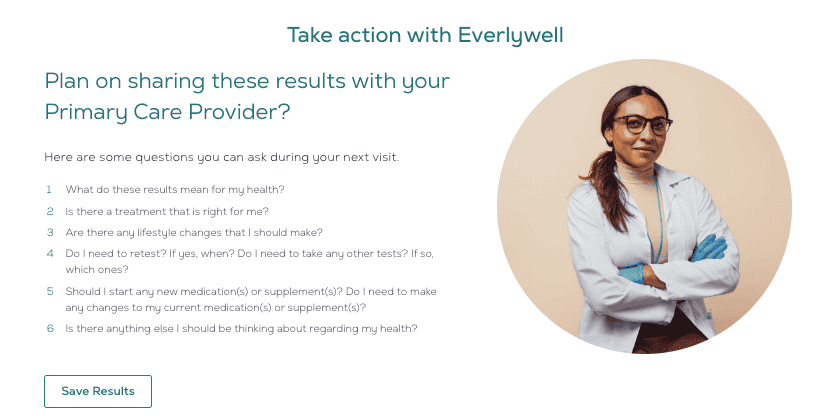
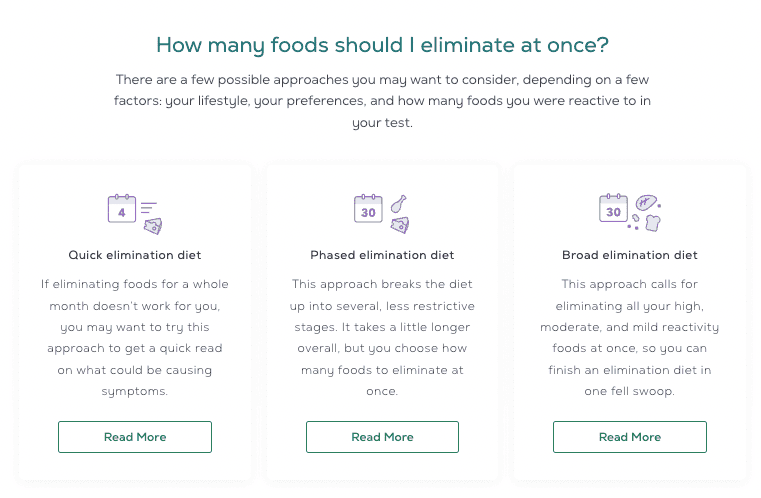
Building a relationship with the Health Optimizer
The real potential for at-home diagnostics is to bring medical-grade testing into the hands of consumers — but it requires a readout that augments the data with actionable direction. As the Health Optimizer looks for ways to become their own healthcare provider, they’re looking for ways to establish a relationship, not a touchpoint. Where Everlywell misses is its assumption that every consumer who does a food sensitivity test wants to proceed to an elimination diet — a solution for everyone that may end up serving only a small percentage. To rise to the challenge, at-home diagnostics like Everlywell need to prove there’s more to their readouts than data.
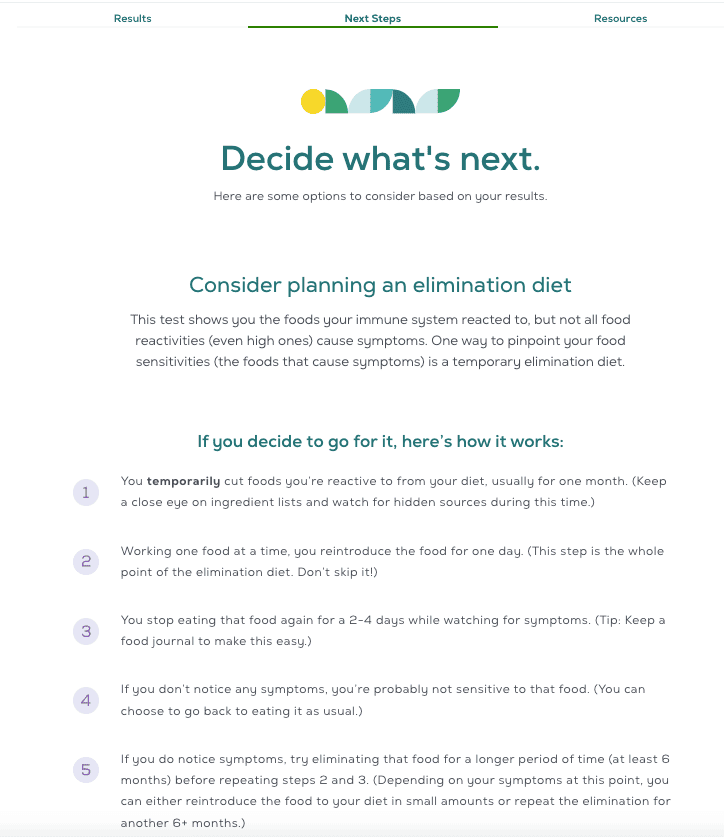
Screenshots from Everlywell report
Adaptability
How well the technology fits to the consumer’s health and daily lifestyle
Which came first, the wearable or the habit?
The idea of developing for adaptability is about seeing that the Health Optimizer wants to optimize their experience yet being uncertain of how to do that. In reality, most health tech device designs are not developed to fit into the consumer lifestyle.
When we first opt into a relationship with a wearable or an app subscription, there is often a period of time of calibration to collect data before devices can report trends or insights. With alerts and notifications that require attention, engagement or reactions and the amount of energy, exertion or data input required from the user, this lack of adaptability becomes a burden, not a benefit.
While most of today’s wearables claim to be customized health devices, there’s an important step that’s missing to do so: aligning on a goal.
Case Study
Balancing adaptability and actionable information

Job to be done
Tell me when it’s ok (and healthy) to take it easy
Our Experience
Whoop’s reputation runs deep as a wearable that integrates health and wellness interactions to give users’ a holistic perspective on personal health. With Whoop, we’re looking for recommendations on when we should train versus recover based on those integrated metrics.
Whoop’s app delivers a daily recovery score and recommendations on how much to strain that day. Along with strain metrics, users can access a journaling feature with inputs from a daily questionnaire. One of the novelties of Whoop is its screenless integration, a feature that decreases distraction. It can even be worn in a variety of locations on the body and even be placed inside clothing.
Building a relationship with the Health Optimizer
As far as adaptability, Whoop lacked the ability to modify a users’ circumstances (i.e. experiencing an injury that hinders physical activity.) With clearer direction on how to change and optimize health habits and moments of positive motivation that encourages the user to make the change instead of creating shame, Whoop has an opportunity to really enable the user to customize their goals within the app so that the wearable takes into consideration and really develops a relationship that is reliable.
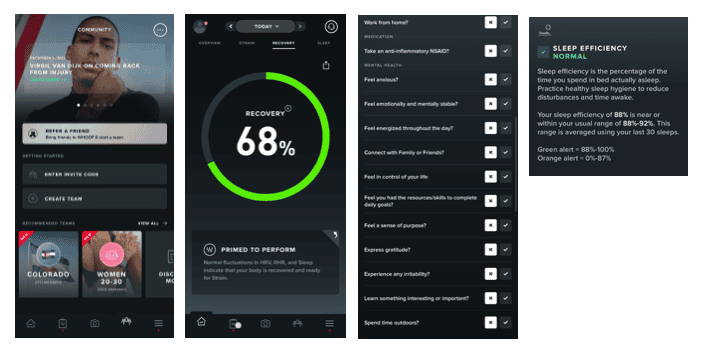
Screenshots from Whoop app
Basis For Trust
How well the technology enables transparency and provides proof points
Every second, we generate data and give it away to companies for free. And we are unaware of where it is being stored and who has access to it. An investigation report from STAT and The Markup, found that telehealth websites are sending sensitive health information to big tech companies.
When we buy a health technology from one of these companies, we enter an unspoken agreement that we will receive useful information about our health in return for allowing them access to sometimes quite personal data. How does our personal data fit into all of this?
These algorithms are what we would call black boxes – they’re not transparent,” says – JP Onnela an Associate Professor of Biostatistics at Harvard T.H. Chan School of Public Health. “So it’s impossible to know what’s in them.”
The trust gap between consumer-grade and medical-grade is growing. Nearly a third of Americans who use wearable health devices trust a consumer device (Apple, FitBit) to manage a chronic condition, yet another 61% of Americans would feel safer using a health monitoring device provided by their doctor.
One way to do that is to provide proof points for personal data. Anything that provides a calculated score should be ready to explain what goes into the score and why these components matter. What does the Oura Readiness Score really include? What about the Whoop Recovery score? Evidence to back this up would go a long way in helping us trust these numbers that are so central to the experience. If algorithms are being updated, a concerted effort at transparency is critical to building a basis for trust.
Case Study
Transparency is the key to trust

Job to be done
Make me better in rest and in motion
Our Experience
Known for its ability to track physical activity and give recommendations on when to train and when to recover, we were eager to see how well Oura was able to give direction or alert us to metrics that shifted from our baseline.
Each morning, Oura calculates a readiness score to recommend how users should approach the day and provides educational content on how to read the graphs and metrics used within the app. Oura claims their algorithm is backed by science and they provide resources for further education on what readiness is and how to improve it.
Developing a relationship with the Health Optimizer
Where Oura can pull away from the wearable pack is its ability to deliver novel insights and a holistic ‘score’ that includes recent activity, sleep patterns, and direct body signals that can signify if your body is under strain. By not only making recommendations at the start of each day, but providing resources for the Health Optimizer to educate themselves, helps establish a relationship and build trust.
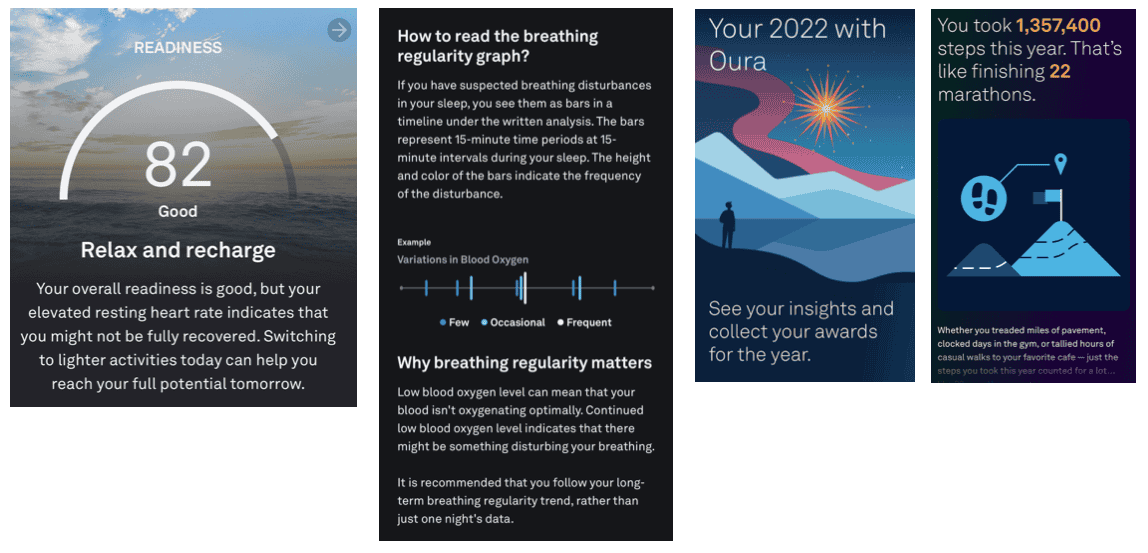
Screenshots from Oura app
The digital health technology revolution has the potential to become the backbone of our health ecosystem — and Health Optimizers are here to lead the way. There’s an opportunity to innovate on solutions that prioritize the facets of building a symbiotic relationship with Health Optimizers. Digital health technologies that prioritize trust, provide direction, and develop for adaptability will be on the leading edge of health innovation.